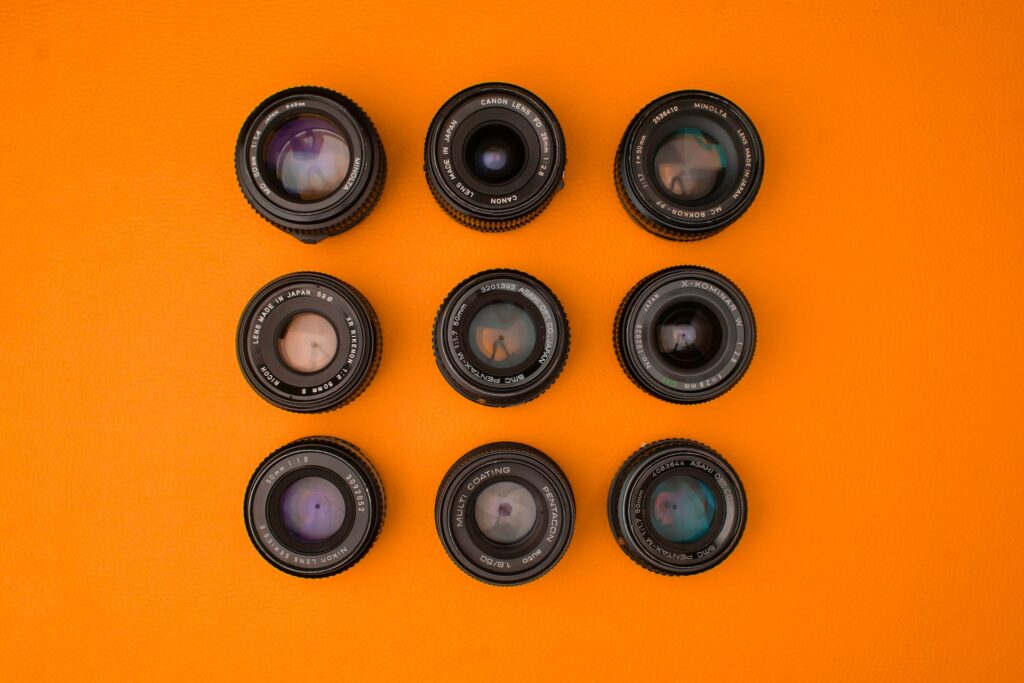
As an Amazon Associate we earn from qualifying purchases.
If it's your first time holding a lens or the one-thousandth-and-oneth time, chances are you still struggle with choosing the right one. Let's admit; there is more technical jargon than you can wrap your head around in
Quick Navigation
The "MM" in lenses refers to the measurement of the lenses' focal length, which is in millimeters. It estimates the distance of the point where the light rays converge to form a sharp image to its digital sensor. You can use this rating to determine several shooting positions or conditions.

This "mm" mark might have one number (such as 50mm) or multiple ( like 18-55mm ). The single-numbered lenses are known as primes and only have one focal length. However, the lenses with multiple numbers before the "mm" letters have variable focal lengths, known as zoom lenses.
For every camera type and model, there are dozens of focal lengths to choose from. It all boils down to the nature of your project. With accurate information on a suitable lens for your specific project type, you'll save a lot more time selecting the best lens.
In
Photographers in the real estate or architectural niche tend to capture enormous subjects. They usually take pictures of skyscrapers, mansions, cathedrals, or gigantic hallways. To capture these subjects with a high degree of quality, you need a wide lens when shooting at certain exposures.
The wide-angle lens, which has a focal length of 16-35mm, is ideal for this. It is suitable for real estate photography or capturing architectural photography because it has an expansive vision of the area around the subjects. This lens allows you to see more of a scene. I also recommend the fisheye lens for capturing tight spaces.
Most portrait photographers consider the standard lenses a one-size-fits-all variant. It is versatile and allows you to shoot with more flexibility and have more angling options. These features make it the go-to lens for all things people and portraits. The ideal focal range for portrait photographers is around 50-70mm.
Landscape photography is the most versatile regarding its lens' focal length. One time you could shoot with a wide-angle prime; another time, it's a telephoto zoom lens. However, when using a telephoto, you risk losing a part of the scene since you are zoomed in.
For your landscape photographs at a far distance, I recommend shooting with a focal length of 70-300mm.

Many photographers agree that a lot of work goes into taking quality photographs in this niche. In wildlife or sports
There are several letters, numbers, and symbols on your camera, each having a specific feature they account for or a distance they measure. The MM is just one of the many letters you can find on your primes or zooms. Let's dive into some of these and decode their meaning.
The F-Numbers or F-stop refers to the ratio of the lens's focal length to the diameter of its aperture. On some lenses, you'll only see figures like this: 3.5/5.5. This means the highest aperture on that lens is f/4.0.
This symbol stands for the diameter of your lens. The standard unit for measuring this diameter is in "mm". Since more light will enter the lens with a larger diameter, the aperture increases, this factor allows for faster shutter speeds and lower ISO settings.
Usually, on the front part of your lens, you'll see figures together with units in feet or meters. What do they represent? These figures measure the minimum focusing distance on your lens. With these figures, you can determine the amount of space you've to work with while shooting.

A higher MM lens is sometimes better than one with a lower focal length. However, the higher the MM mark on your camera, the longer the focal point. So, if you're shooting with a zoom lens, you have more options to magnify your subject.
No specific MM lens is the best for all shooting conditions and photograph types. Several factors to consider while shooting, such as the subject distance and the shutter speed. A 50-85mm lens is better for portraits. At least 300mm is ideal for landscape and wildlife shoots.
There's a wide range of technical terms in
